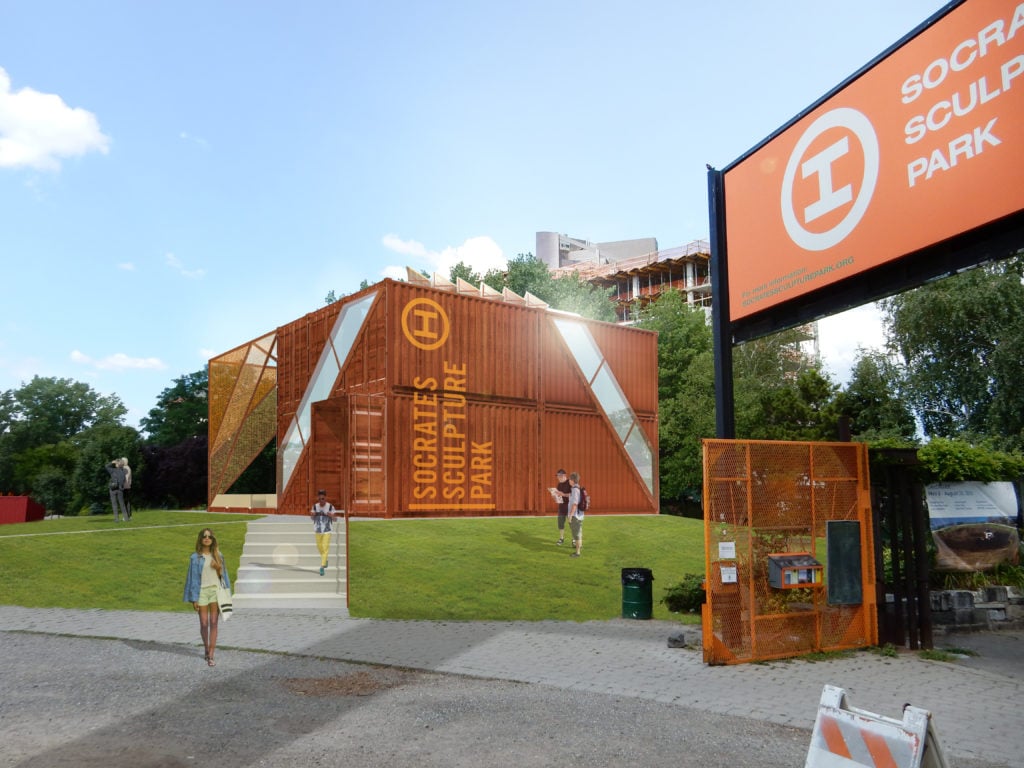Art World
Socrates Sculpture Park Celebrates 30 Years With Its First Permanent Building, by LOT-EK
The structure started its life at the Whitney Museum.

The structure started its life at the Whitney Museum.

Brian Boucher

Socrates Sculpture Park, the popular Long Island City venue, is commissioning its first permanent building, just in time to celebrate the beginning of its fourth decade.

LOT-EK, “The Cubes,” for Socrates Sculpture Park.
Founded by sculptor Mark di Suvero in 1986, Socrates has shown more than 1,000 artists, including Vito Acconci, Sanford Biggers, Agnes Denes, Melvin Edwards, and Meg Webster, in its five-acre waterfront setting. The site was previously an illegal dumping ground. Some 150,000 people visit annually; the park serves more than 10,000 students a year.
New York firm LOT-EK will design “The Cubes,” a 2,640-square-foot, two-story structure that will house education spaces, a gallery, and offices. Socrates will actually be the second New York institution where the structure will reside. The building was born at the Whitney Museum of American Art, which commissioned it. It was constructed from six shipping containers and housed education programs.

The Whitney’s educational studio space, designed by LOT-EK. Courtesy of LOT-EK.
The Whitney offered to donate the structure to Socrates when it left its Madison Avenue location to move downtown; the original 720-square-foot structure has been expanded by an additional 12 shipping containers, which rhyme with the sculpture park’s longstanding use of these industrial materials throughout the site.
LOT-EK was founded by Ada Tolla and Giuseppe Lignano, in Naples, Italy, in 1993, and opened in New York in 1995. As it happens, the firm’s résumé includes numerous other projects using shipping containers, such as a public library in Korea, exhibition space for New York’s Bohen Foundation, and mobile dwelling units.
The firm is also known for artworks and exhibition designs that have appeared at venues including the Whitney (housing sound art works in the 2001 show “Bitstreams”) and the New York gallery Henry Urbach Architecture (an installation now in the Guggenheim Museum’s collection). Their work appears in institutional collections including New York’s Museum of Modern Art.